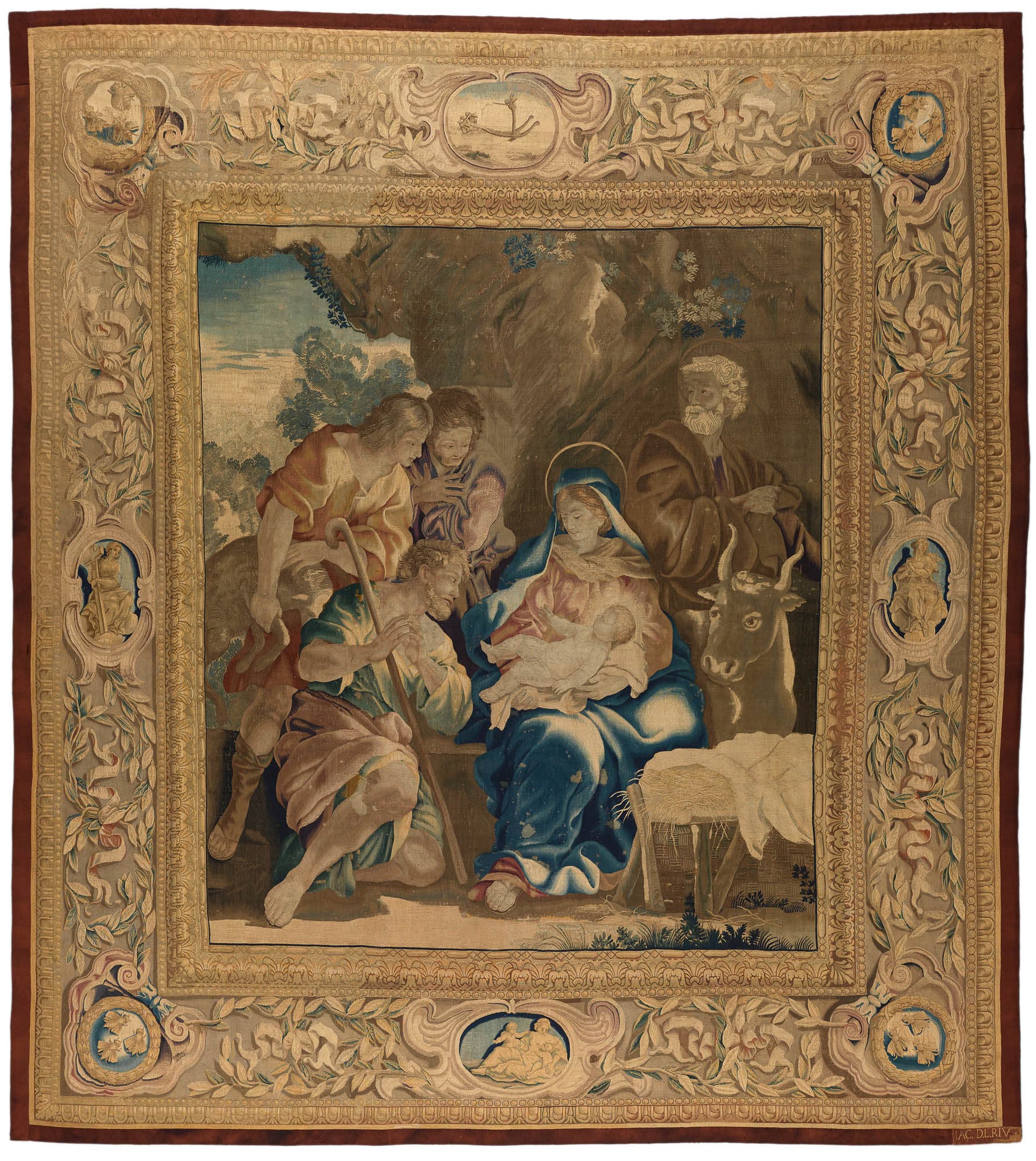In the age of the Baroque, tapestries were among the most precious objects in any collection, lending a material splendor to the residences of the powerful. In the competition for magnificence that animated 17th century Rome, the Barberini (the family of Pope Urban VIII) outdid all their rivals by founding their own tapestry workshop in 1625, creating custom-wove designs by such eminent artists as Pietro da Cortona and Giovanni Francesco Romanelli.
The Barberini Tapestries: Woven Monuments of Baroque Rome features one of the Barberini’s most renowned series—the Life of Christ—on loan from the Cathedral of St. John the Divine in New York City. The exhibition furthers our appreciation of these awe-inspiring objects, both as aesthetic environments and as cultural artifacts. Curated by James Harper, associate professor, History of Art and Architecture at the University of Oregon, the exhibition is accompanied by a fully illustrated publication and an interactive online learning experience created by University of Oregon’s Department of Geography and Campus GIS Office.
The exhibition comes at a propitious time. In 2001, the Cathedral of St. John the Divine experienced a devastating fire that greatly damaged two of these tapestries. With the recent conservation of these works and the cleaning of others, the Life of Christ series (now on view at the Cathedral for the first time since the fire) travels to the West Coast. This marks the first time the tapestries have traveled outside New York since they came to the United States in 1889.
The Barberini Tapestries is made possible with the generous support of the National Endowment for the Arts, the National Endowment for the Humanities, Alex & Amanda Haugland, Dentistry @ The Ten, Sharon Ungerleider, Excelsior Inn and Ristorante Italiano and JSMA members. Public Programs






